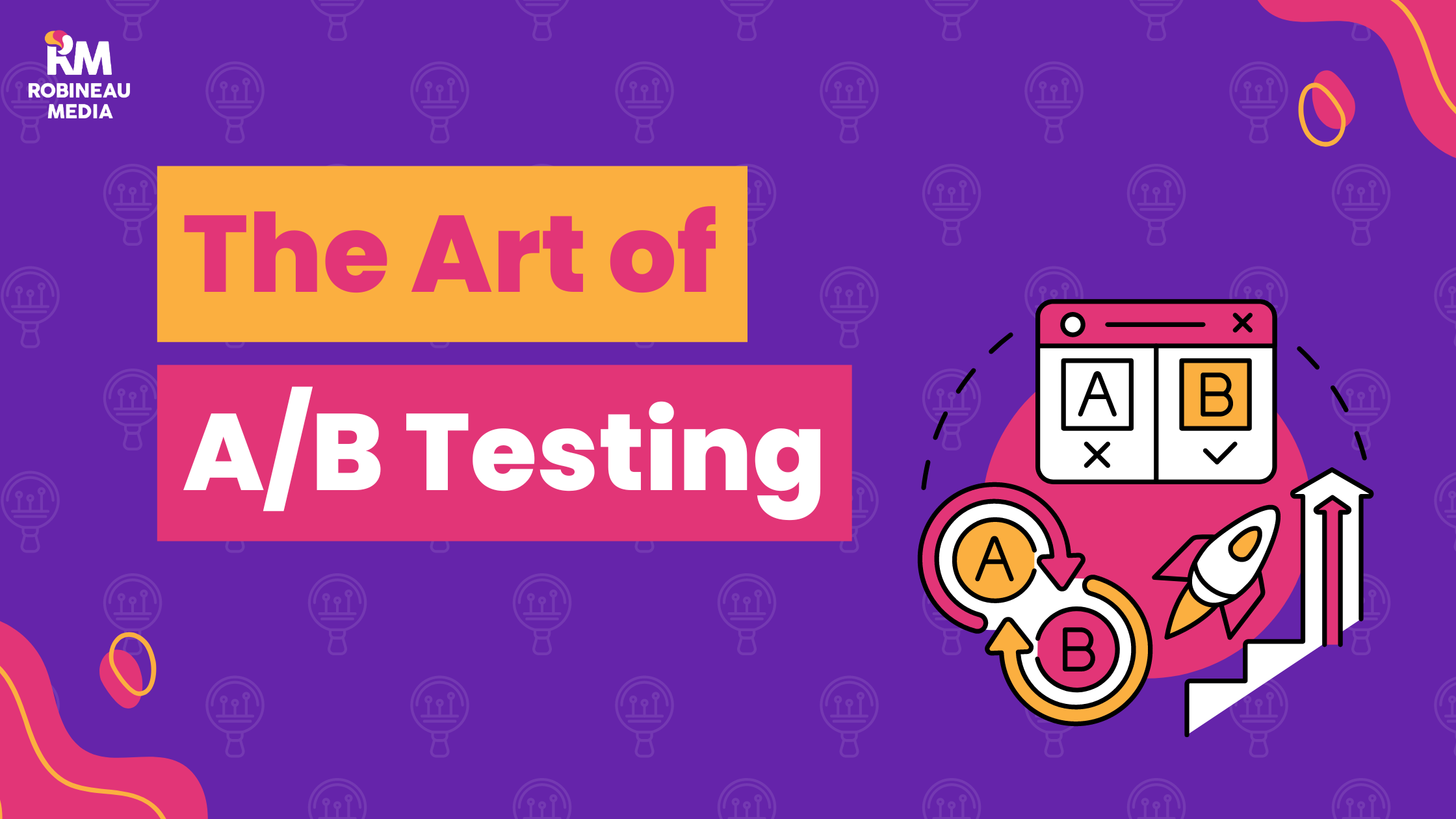Making informed decisions is the key to success in the dynamic world of digital marketing. To make these decisions, you might have heard about this mythical form of marketing testing called “A/B testing.” But you might be asking yourself things like: “What is A/B testing exactly?” and “Why does testing matter?” Keep reading to find the answers and explore the art of A/B testing and how it can drive your marketing efforts to new heights!
What is A/B Testing?
A/B testing, also known as split testing, involves creating two variants (A and B) of a single variable to determine which one performs better. This method allows you to test hypotheses by comparing the effectiveness of two different elements, such as headlines, images, call-to-actions (CTAs), or even entire page layouts. By systematically changing one element at a time, you can isolate the impact of each variation on user behavior and make data-driven decisions.
Why Does A/B Testing Matter?
Depending on what you decide to test, A/B testing offers many benefits to your marketing team. Here are four benefits to sway you into trying A/B testing.
- Data-Driven Decisions: A/B testing eliminates guesswork by providing concrete data on what resonates with your audience.
- Increased Conversion Rates: By optimizing elements that directly influence user actions, you can significantly boost your conversion rates.
- Enhanced User Experience: Testing different designs and content helps you understand what users prefer, leading to a more engaging and satisfying experience.
- Reduced Risk: Implementing changes based on A/B testing results minimizes the risk of negatively impacting user experience or conversion rates.
We’ve helped you understand the what and the why, but now you might be left wondering “How do I complete the A/B testing process?” Well, those answers are coming up next!
The A/B Testing Process
While the testing process is reminiscent of school science fairs, for an effective and beneficial A/B test, you should follow these steps:
Start by defining a clear objective. When thinking of your goal, ask yourself “What do I want to improve?” It could range from increasing click-through rates, boosting sign-ups, or enhancing engagement.
Based on your desired goal, formulate a hypothesis that predicts how the change will impact user behavior. For instance, “Changing the Subscribe button color from red to blue will increase the click-through rate.”
Choose one variable to test. This could be your subject line, headline, image, call-to-action, or any other element on your page. Testing multiple variables simultaneously can be complex and harder to analyze.
Create two versions of the selected variable: the control - your original version - and the variant - the new version you want to test. Ensure that the only difference is between the elements you have chosen and nothing else on the page.
Determine the size of your audience for the test. Use statistical tools to calculate the required sample size to achieve statistically significant results. Tip: a larger sample size provides more reliable results.
Randomly split your audience into two groups: Group A sees the control, while Group B sees the variation. Run the test for a sufficient period to gather enough data, avoiding premature conclusions.
After the test ends, analyze the data to see which version of your variable performed better. Use statistical significance to ensure the results are not due to random chance.
- Implement the Winning Variation:
If the variation outperforms the control, implement it. If not, stick with the original and consider testing a different element.
Overall, A/B testing is an invaluable tool for optimizing your digital marketing efforts. By systematically testing and analyzing different elements, you can make data-driven decisions that enhance user experience, increase conversion rates, and ultimately drive business growth. Embrace the art of A/B testing, and unlock the full potential of your marketing strategy.


